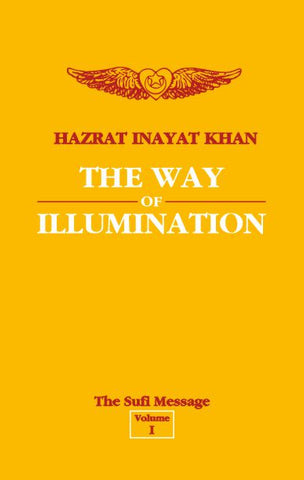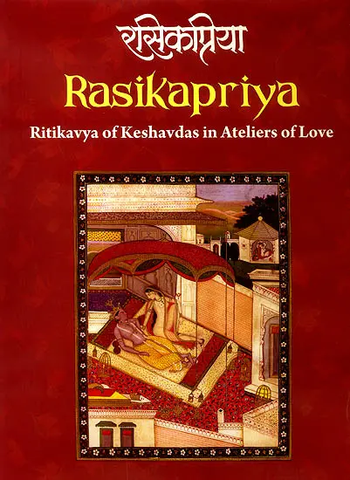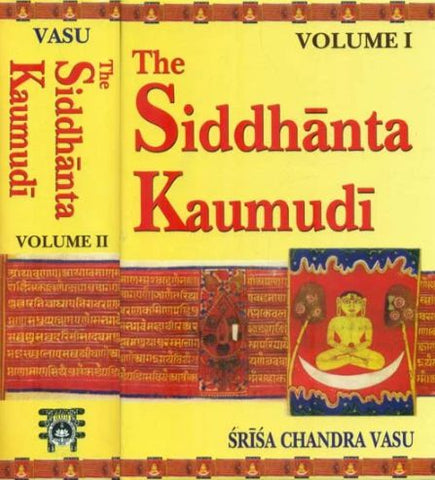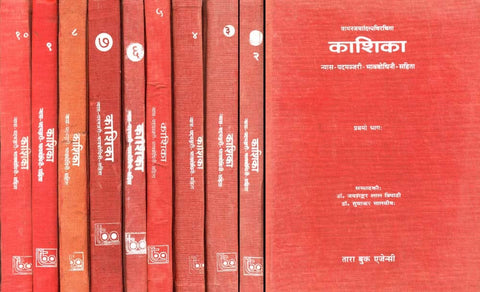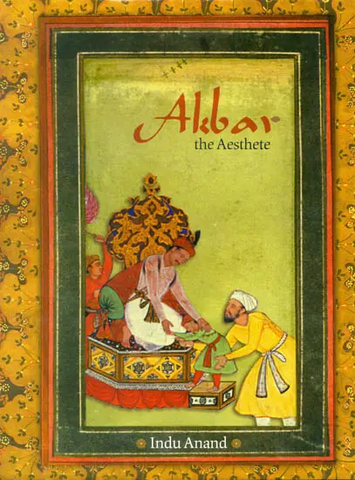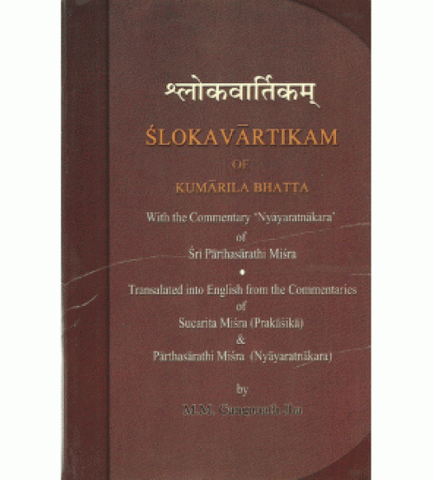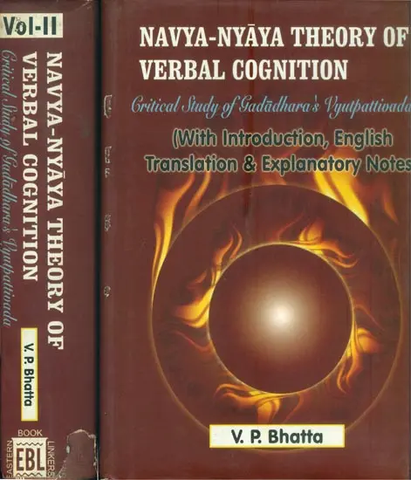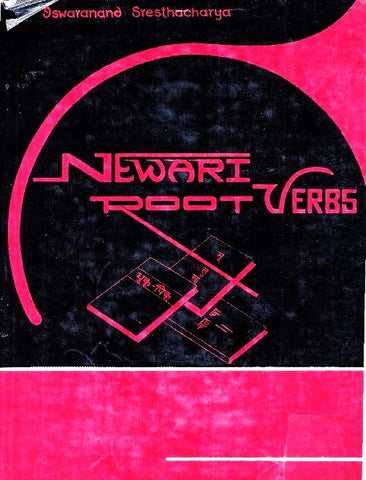Your cart is empty now.
Here is a textbook of Sanskrit grammar whose popularity with teachers and students alike has been on increase since its first printing. In it the essentials of Sanskrit grammar are carefully organized in thirty selected lessons. Interest in lessons is added by quotations of vocabulary from original Sanskrit, and the student is encouraged to read and memorize them. The lessons are followed by appendixes which are of no less interest. The inclusion of English-Sanskrit and Sanskrit-English glossaries is a special feature of the book. The reprint of A Rapid Sanskrit Method will be welcomed by the students as well as the teachers.
George L. Hart studied under Professor Daniel Ingalls and obtained his Ph.D. in Sanskrit and Indian studies from Harvard University in 1970. He taught Sanskrit and Tamil at the University of California, at Berkeley, At present, he is a Professor at the Department of South and Southeast Asian Studies, at the University of California, Berkeley.
Dr Hart's major research work to date is The Poems of Ancient Tamil: Their Milieu and Their Sanskrit counterparts.
The Sanskrit language is perhaps the one thread which binds together the many disparate cultures of Hindu India. That would be reason enough for any student of India to learn it, but there are other reasons which are equally valid.
Sanskrit, or samskrtabhasa, "the refined language," evolved from the tongue in which the Vedas were written sometime in the later half of the second millennium B.C., a language known actually been a language spoken by the common people (unlike its forerunner, Vedic), was standardized once and for all by the great grammarian Panini and his predecessors in about the fifth century B.C. From that time until the hegemony of the Moslems, it remained the chief language used in India for communication from one region to another (with the possible exception of the five centuries before Christ, when the use of Prakrit was common). Sanskrit was, moreover, the language for nearly two thousand years. It is, like Chinese, Arabic, Greek, and Latin, one of the few languages which have been a carrier of culture over a long period of time. Thus, the variety of writings in it, and the quantity of those writings, are staggering. An incomplete list of subjects treated in Sanskrit, usually with great prolixity, is as follows:
The Four Vedas
The Brahmanas and Aranyakas
The Upanisads
Grammar (Vyakaranasastram)
Epic (pauranika) literature-including 18 major puranas, 18 minor puranas, and hundreds of sthalapuranas.
Classical literature, including hundreds of plays, kavyas and other classical forms.
Buddhist Mahayana literature
Works on esthetics (alamkarasastram)
Works on erotics
Works on medicine
Works on Philosophy and theology, comprising six main orthodox Hindu systems, six main heterodox systems, and scores of subsystems
Works on logic
Stotras-devotional hymns
Dictionaries
Works on astronomy and astrology
Works on mathematics
Lawbooks
Works on ritual
Works on Tantrism
Works on architecture
Histories
Panegyrics
Inscriptions
Works on music
Works on sculpture and painting.
On most of these subjects, there is immense literature still extant. Indeed, a rough estimate of the works which will be listed in The New Catalogues Catalogorum yields a total of about 160, 000 works still extant in Sanskrit, many so difficult that it would take years of study to properly understand them. and while it would be wrong to suppose that every work in Sanskrit is of great esthetic or scientific value, the fact remains that Sanskrit does have its share of great writers: Kalidasa ranks with the greatest poets, Panini is without question the greatest pre-modern grammarian, the Mahabharata ranks with the Iliad and the Odyssey, and the Bhagavatapurana is among the finest works of devotion ever written, being equal in my opinion only by other works in Indian languages.
Sanskrit is important for students of linguistics, and especially for Indo-Europeanists, as Vedic is one of the closest languages to Indo-European, the parent of most European and North Indian languages. Panini's system itself has been an object of the study of many modern linguistics students; its discovery has been called the beginning of the modern science of linguistics.
For students of all modern Indian languages (except perhaps Urdu, some knowledge of Sanskrit is essential. Not only are the North-Indian languages descended from Sanskrit (or something close to it); in addition, all of the Indian languages (except Tamil and Urdu) draw on Sanskrit for most of their technical vocabulary, with the result that they have tens of thousands of words taken unchanged from Sanskrit. Indeed, works in Telugu, Kannada, and Malayalam often possess Sanskrit compounds more complex than those normally encountered in Sanskrit literature itself, a state of affairs which, I am told, applies also to some of the North-Indian languages.
Thus an excellent argument can be made that for most students of India, an acquaintance with Sanskrit is helpful and that for many it is essential. Yet I strongly feel that the importance of the other Indian languages should also be pointed out here, if only because so many Indologists in the past have felt that it is enough if students of ancient and medieval India know only Sanskrit. As a student of Tamil with some acquaintance with other South-Indian languages and literature, I have been struck by the extent and quality of the classical literature in each of the Dravidian languages. And not only in the extent but also in the profound difference between the classical literature in each Sanskrit. Indeed, it seems to me now that any student who knows only Sanskrit and does not know any South Indian language, cannot hope to fathom accurately any aspect of South Indian history, and that his awareness of classical Indian literature can only be one-sided, like that of a classics student who knows only Latin or only Greek. This is especially true with regard to Tamil literature, which rivals Sanskrit in size and scope as well as quality. Yet a reader of most of the histories of Indian literature, of Indian esthetics, of Indian religion, and of India itself cannot help but be taken aback at how rarely non-Sanskritic sources are even mentioned (much less consulted) by writers on these subjects. The fact is that most authors have written as if Sanskrit and its close relatives constitute the only classical tradition of India, ignoring the fact that all of the Southern languages and many of the Northern languages have classical or medieval literature which is vitally important for most of the fields investigated by Indologists. Because of this, many areas of Indology need extensive revision, a process which will occupy the attention of Indologists for many years. The student should also keep in mind the fact that Sanskrit, in spite of its size, is a classical language, with no living tradition. To neglect the study of a modern Indian language is to cut oneself off from modern India, to restrict oneself that access to a living culture which is of great help in the understanding of all aspects of India. Thus I feel that it is essential that Indologists combine with their study of Sanskrit the study of at least one modern Indian language, chosen with their eventual specialization in mind.
A note concerning the use of this book is in order. Before receiving its final form, it was used for a semester at the University of Wisconsin. During that time, many mistakes were corrected, and several explanations that the students found unclear were rewritten. The book is intended to be completed in one semester by a class which meets for three hours a week. The introduction should be completed in a week, after which lessons 1-12 should be covered at the rate of three a week. Thereafter, it is necessary to go slower, spending two classes on each lesson. Each teacher will have to find his own speed, but I feel that it is inadvisable to go slower than this. It may not be possible to finish the entire primer in one semester, but it should be possible to go at least through lesson 27. During the second semester, Lanman's Sanskrit Reader should be the text, with between one and two pages covered at each class meeting, so that all (or almost all) of the selections through page 56 (the end of the Kathasaritsagara section) are covered. It is not necessary to complete any unfinished lessons of this primer during the second semester, but the students should read over and assimilate the grammatical material in the remaining lessons and the appendix. During the second year, I feel that it is best to read material which is relatively easy-ideally, material from the epics. For example, the entire Gita may be covered during the first semester of the second year, while material from the epics may be read during the second, at the rate of 20-25 slokas a class (assuming three classes a week). Then, by the third year, the student should be prepared to begin the study of more technical materials.
For virtually everything which is good in this book, I have Daniel H. H. Ingalls, my teacher and guru, to thank. The method is based ultimately on the way in which he taught me Sanskrit, as the suggestions for material to be covered in subsequent semesters given above. I can only repeat his advice at this point; that, while the class study is essential for a Sanskritist, it is equally essential that he supplement his study with extensive Sanskrit reading on his own after the first year. This means between 10 and 20 hours a week of extra work. The best materials for such outside work I have found are the Mahabharata and the Kathasaritsagara (again, at Ingalls' suggestion).
The ultimate aim of the course of study outlined above is to make the student nearly as fluent in reading Sanskrit as he is in reading his own language. I would stress that no matter what field of Sanskrit a student wishes to investigate, fluency in simple Sanskrit is a prerequisite. I have found that students who can-not read easy Sanskrit with facility simply cannot handle more difficult texts, no matter how much effort they put forth, for they lack an intuitive model for the structure of the language, something which can be acquired only by the extensive rapid reading of the sort which cannot be carried on in the more technical subjects. Thus I would strongly advise all students of philosophy or other technical subjects to become fluent enough in simple Sanskrit to read at least 30 (and, ideally, 100) slokas an hour.
It is commonplace that valuable endeavours require work and effort. Certainly, as this Preface suggests, the learning of Sanskrit is no exception to this rule. Yet the results of such a study are valuable in so many ways that it is impossible to list them all. Suffice it to say that the student will find his entire awareness broadened by the ability to conceive things in a different cultural context which the study of Sanskrit imparts.
| Preface | vii | |
| A Note of Thanks | xv | |
| Introduction: The Sanskrit Alphabet | xvi | |
| 1 | Thematic verbs; present active endings | 1 |
| 2 | The cases; declensions of deva, phalam | 6 |
| 3 | The middle present | 11 |
| 4 | Samdhi of final vowels | 13 |
| 5 | Samdhi of -as, -as, -s, -r | 16 |
| 6 | Samdhi: -r, -n, -t, -n- | 19 |
| 7 | Agni, Kirti, sena | 22 |
| 8 | The imperfect middle: use of iti | 24 |
| 9 | The imperfect middle: use of iti | 27 |
| 10 | Declensions of nadi and Pad | 30 |
| 11 | Declensions of datr, rajan | 35 |
| 12 | Declensions of aham, tvam, sa | 39 |
| 13 | Ayam and asau; relatives | 44 |
| 14 | The optative active; nouns in -u | 51 |
| 15 | The optative middle; nouns in -s | 55 |
| 16 | The imperative active; tatpurusa compounds | 59 |
| 17 | The imperative middle; dvandva compounds | 64 |
| 18 | Bahuvrihi compounds | 68 |
| 19 | Athematic verbs, class 2 | 77 |
| 20 | Athematic verbs, class 5, 7, 8, and 9 | 84 |
| 21 | Athematic verbs, class 3; reduplication | 92 |
| 22 | Possessives in -in, -vant, -mant; Present active participles | 98 |
| 23 | The present middle participle; the locative and genitive absolutes | 105 |
| 24 | The Passive | 110 |
| 25 | The causative | 118 |
| 26 | Past passive participles; Past active participles | 128 |
| 27 | The continuative; verbal prefixes | 138 |
| 28 | The infinitive; the simple future; the periphrastic future | 148 |
| 29 | The perfect periphrastic; the perfect participle | 156 |
| 30 | The three gerundives | 168 |
| Appendix I | 175 | |
| The aorists | ||
| The desiderative | ||
| The Intensive | ||
| The denominative | ||
| Appendix 2. A review sheet | 182 | |
| Sanskrit-English glossary | 189 | |
| English-Sanskrit glossary | 199 |
Delivery and Shipping Policy
- INTERNATIONAL SHIPPING
- Rs.1000-1100/kg
- ESTD. Delivery Time: 2-3 weeks (depending on location)
- Bubble Wrapped with Extra Padding
- NATIONAL SHIPPING
- NCR: Rs. 30/half kg
- Standard: Rs. 80/half kg
- Express shipments also available on Request
- ESTD. Delivery Time: Ranging from 1-4 days up to 7 business days (Depending on your choice of Delivery)
- TRACKING
- All orders; national or international, will be provided with a Tracking ID to check the status of their respective orders
- Depending on the Shipping Service, Tracking ID may be used on their respective tracking portals
Frequently Asked Questions (FAQs)
Domestic Shipping: 3-4 Days (after shipping)
International Shipping: 1-2 weeks (based on your location)
You will receive an email once your order has been shipped or you can email us if you didn't receive tracking details (info@mlbd.co.in)
Every book that we sell is the latest edition except all the rare books
Yes, we do provide free shipping, only on domestic orders (within India) above Rs.1500



